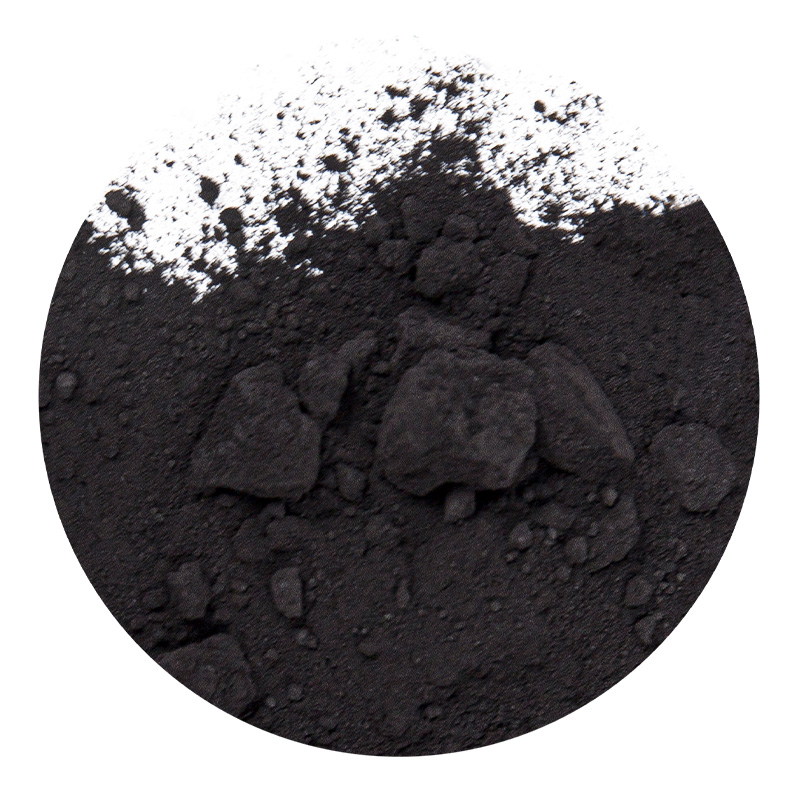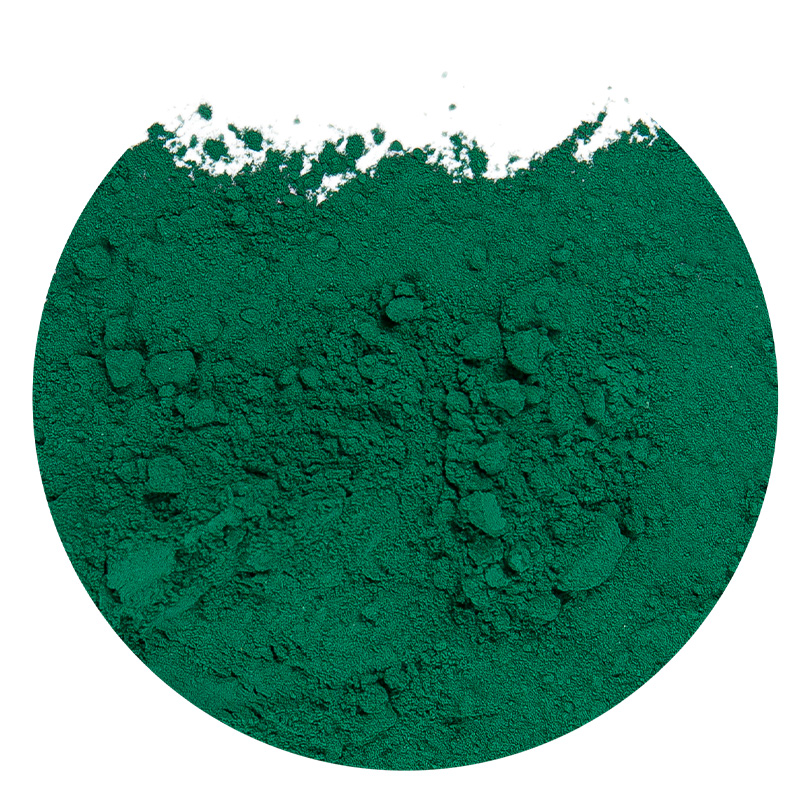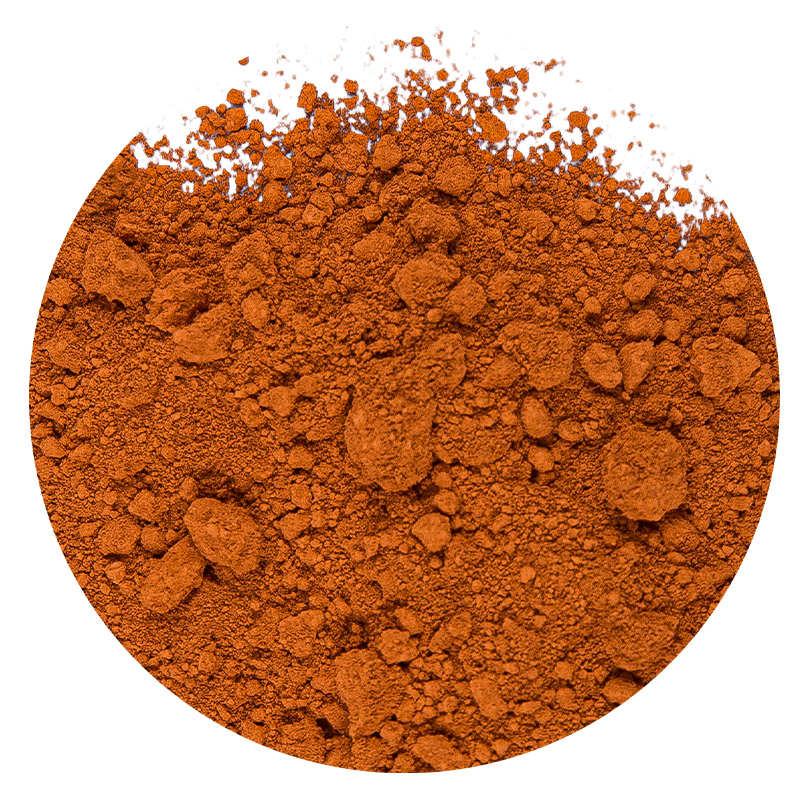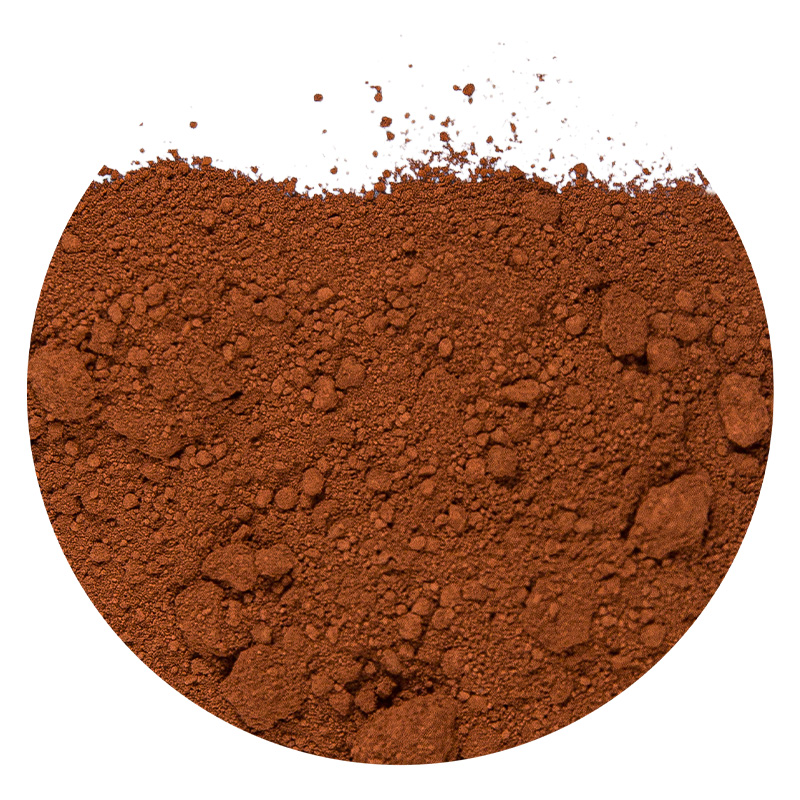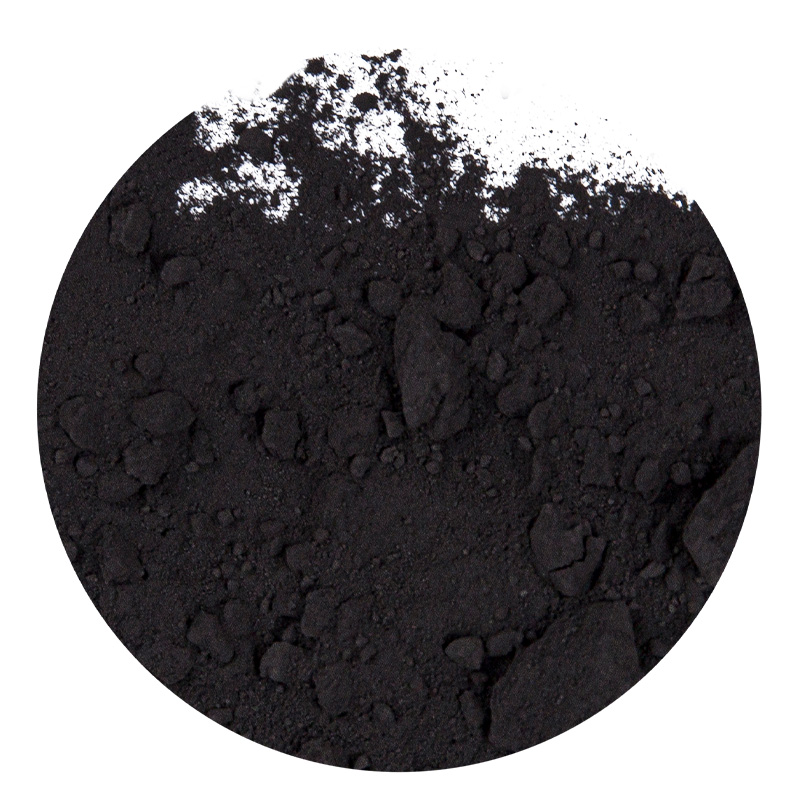Safety and Usage Precautions for Iron Oxide Powders
- 1 What is Iron Oxide Powder? A Versatile Workhorse
- 2 Addressing the Core Concern: Is Iron Oxide Powder Toxic?
- 3 A Practical Guide on How to Handle Iron Oxide Powder Safely
- 4 Mastering Iron Oxide Pigment Storage Guidelines
- 5 Material Insights: Difference Between Natural and Synthetic Iron Oxide
- 6 FAQ
- 6.1 What are the most common iron oxide powder uses in construction?
- 6.2 So, is iron oxide powder toxic if inhaled?
- 6.3 What is the first step in how to handle iron oxide powder safely?
- 6.4 Can you summarize the key iron oxide pigment storage guidelines?
- 6.5 From a safety standpoint, what is the main difference between natural and synthetic iron oxide?
Iron Oxide Powder is an indispensable pigment and functional material found in countless products, from the vibrant colors of concrete and paints to the coatings on pharmaceuticals. While generally considered stable and low in toxicity, its fine, dusty nature necessitates a rigorous approach to safety. This comprehensive guide delves into the essential precautions for handling, storing, and using iron oxide powders, empowering professionals and enthusiasts to leverage their benefits while minimizing any potential risks to health and the environment.
What is Iron Oxide Powder? A Versatile Workhorse
Before addressing safety, it's crucial to understand what iron oxide powder is and why it's so widely used. These powders are chemical compounds composed of iron and oxygen, prized for their intense color, UV stability, and cost-effectiveness.
Defining Iron Oxide and Its Common Forms
Iron oxides occur in various hues, each with a specific chemical structure. The three primary types form the basis for a wide spectrum of colors.
- Iron Oxide Red (Fe₂O₃ - Hematite): The most common form, known for its reddish-brown color and excellent hiding power.
- Iron Oxide Yellow (FeO(OH) - Goethite): Provides a range of yellow shades but can lose water and convert to red at high temperatures.
Iron Oxide Black (Fe₃O₄ - Magnetite):
- Offers a deep black color and is magnetic, which lends itself to specialized applications.
Key Iron Oxide Powder Uses in Construction and Beyond
The application of Iron Oxide Powder is vast, but its most significant impact is in the building and manufacturing sectors. Its ability to provide permanent, weather-resistant color makes it a top choice.
- Concrete and Pavers: Integral coloring for concrete bricks, blocks, paving stones, and ready-mix concrete.
- Coatings and Paints: Used in industrial coatings, architectural paints, and primers for its durability and opacity.
- Plastics and Rubber: Acts as a colorant and sometimes as a UV stabilizer in various polymer products.
- Cosmetics and Personal Care: Used in makeup like eyeshadow and blush, approved for cosmetic use in specific purities.
Addressing the Core Concern: Is Iron Oxide Powder Toxic?
The question of "is iron oxide powder toxic" is common and important. The answer is nuanced: while not highly toxic, it is not inert and requires respect, primarily due to its physical form as a fine dust.
Understanding the Toxicity Profile and Exposure Routes
The primary health risks associated with Iron Oxide Powder are related to prolonged or significant exposure, particularly through inhalation.
- Inhalation: Repeated inhalation of dust can lead to respiratory tract irritation and, in extreme cases, a benign condition called siderosis, a type of pneumoconiosis from iron dust deposition in the lungs.
- Skin Contact: May cause mechanical irritation or dryness but is not a known skin sensitizer.
- Eye Contact: Dust can cause mechanical irritation and redness.
- Ingestion: Considered low toxicity if ingested in small amounts, but large quantities can be harmful.
Regulatory Classifications and Safe Exposure Limits
Globally, occupational health organizations have set exposure limits for nuisance dusts, which include iron oxide. Adherence to these limits is a cornerstone of workplace safety.
The following table outlines common occupational exposure limits for inhalable dust, which apply to iron oxide powders.
| Authority | Parameter | Limit (8-hour TWA) |
| OSHA (USA) | Inert or Nuisance Dust | 15 mg/m³ (total dust), 5 mg/m³ (respirable fraction) |
| ACGIH (USA) | Particulate (Insoluble) Not Otherwise Classified | 10 mg/m³ (inhalable), 3 mg/m³ (respirable) |
A Practical Guide on How to Handle Iron Oxide Powder Safely
Proper handling procedures are the first line of defense against the potential hazards of Iron Oxide Powder. Implementing these practices minimizes dust generation and exposure.
Essential Personal Protective Equipment (PPE)
PPE is critical for protecting workers during tasks that generate dust. The correct equipment forms a vital barrier.
- Respiratory Protection: Use a NIOSH-approved N95 dust mask for light exposure. For higher dust concentrations, a half-face or full-face respirator with P100 filters is necessary.
- Eye Protection: Safety goggles with side shields are essential to prevent dust from irritating the eyes.
- Skin Protection: Wear impermeable gloves and long-sleeved clothing to prevent skin contact and contamination.
Safe Work Practices and Engineering Controls
Beyond PPE, workplace design and practices are more effective at controlling hazards. The goal is to capture dust at the source.
- Local Exhaust Ventilation (LEV): Use dust extraction systems at mixing stations, bag dumping points, and any area where powder is transferred.
- Process Enclosure: Enclose processes like mixing and milling to contain dust.
- Good Housekeeping: Use HEPA-filtered vacuum cleaners for cleanup. Avoid dry sweeping or using compressed air, which creates airborne dust.
- Labeling and Training: Ensure all containers are clearly labeled, and all personnel are trained on the associated hazards and safe procedures.
Mastering Iron Oxide Pigment Storage Guidelines
Proper storage is not only about preserving the quality of the Iron Oxide Powder but also about preventing safety hazards and environmental contamination.
Ideal Storage Conditions for Stability and Safety
Adhering to these iron oxide pigment storage guidelines ensures the material remains dry, stable, and contained.
- Environment: Store in a cool, dry, and well-ventilated area away from direct sunlight and heat sources.
- Containers: Keep in tightly sealed original containers or dedicated, labeled chemical storage containers.
- Separation: Store away from incompatible materials, particularly strong acids and oxidizing agents.
Incompatible Materials and Spill Response Procedures
Knowing what to avoid and how to manage accidents is a critical part of safety protocols. Even stable materials can react under certain conditions.
- Incompatible Materials: Strong acids, strong oxidizing agents (e.g., peroxides, chlorates).
- Spill Response: Wear appropriate PPE. Isolate the area. Prevent dust from becoming airborne. Carefully scoop spilled material into a sealed container for disposal. Vacuum with a HEPA filter for final cleanup.
Material Insights: Difference Between Natural and Synthetic Iron Oxide
From a sourcing and performance perspective, understanding the difference between natural and synthetic iron oxide is crucial. This choice can impact color consistency, purity, and the specific safety considerations required.
Origin, Purity, and Composition
The fundamental distinction lies in their production. Natural oxides are mined and processed, while synthetic ones are manufactured through chemical processes.
- Natural Iron Oxides: Mined from the earth, then crushed, milled, and purified. They may contain various mineral impurities like silica, clay, or manganese.
- Synthetic Iron Oxides: Manufactured through controlled chemical reactions (e.g., precipitation, thermal decomposition of iron salts). This allows for high purity and consistent chemical composition.
Performance and Safety Implications
The production method leads to differences that affect their application and handling profile. Reputable manufacturers like Deqing Demi Pigment Technology Co., Ltd. specialize in producing high-performance synthetic pigments with controlled properties, including micronized and low heavy metal content grades, which offer distinct advantages in consistency and safety.
The following table compares the key characteristics of natural and synthetic iron oxide powders.
| Characteristic | Natural Iron Oxide | Synthetic Iron Oxide |
| Color Consistency | Lower (varies by batch and mine) | Very High |
| Purity | Lower, contains impurities | Higher, controlled chemistry |
| Heavy Metal Content | Can be variable and higher | Can be controlled to very low levels |
| Particle Size & Shape | Irregular | Uniform and controllable |
| Primary Safety Concern | Dust (plus potential for crystalline silica impurities) | Dust |
FAQ
What are the most common iron oxide powder uses in construction?
The most prevalent iron oxide powder uses in construction revolve around integral coloring of cement-based materials. It is extensively used to color concrete paving stones, roof tiles, bricks, and ready-mix concrete for a uniform, weather-resistant hue that will not fade. It is also a key pigment in construction paints and anti-corrosion coatings for metal structures, providing both color and an additional barrier against the elements. Its stability in alkaline environments (like concrete) and resistance to UV light make it the industry standard for long-lasting color.
So, is iron oxide powder toxic if inhaled?
While not classified as a systemic poison, inhalation is the primary exposure route of concern. Breathing in Iron Oxide Powder dust can irritate the respiratory system. With chronic, high-level exposure over many years, it can lead to a condition known as siderosis, which is a benign accumulation of iron dust in the lungs. However, this is distinct from more serious diseases like silicosis. The key to safety is preventing inhalation through engineering controls and proper personal protective equipment, keeping exposure below the recommended occupational limits.
What is the first step in how to handle iron oxide powder safely?
The very first step in how to handle iron oxide powder safely is to implement engineering controls to prevent dust from becoming airborne in the first place. This means using processes and equipment designed to contain the dust, such as local exhaust ventilation (LEV) at transfer points, using closed-system transfers, and employing dedicated mixing equipment with dust covers. Relying solely on personal protective equipment (PPE) is a secondary line of defense. The most effective safety protocol always prioritizes eliminating the hazard at the source.
Can you summarize the key iron oxide pigment storage guidelines?
Absolutely. The key iron oxide pigment storage guidelines are: Keep it Cool, Closed, and Dry. Store containers in a cool, dry, and well-ventilated place, away from direct sunlight and heat sources. Ensure all bags and drums are tightly sealed when not in use to prevent moisture absorption and dust release. Furthermore, store the powder away from incompatible materials, particularly strong acids. Proper storage, as practiced by dedicated producers, preserves the product's quality and prevents it from becoming a safety or housekeeping issue.
From a safety standpoint, what is the main difference between natural and synthetic iron oxide?
The main safety difference lies in the potential for additional hazards from impurities. Natural Iron Oxide Powder, being a mined product, can be contaminated with other minerals, most notably crystalline silica, which is a known human carcinogen and can cause silicosis. Synthetic iron oxides, produced under controlled conditions by companies like Deqing Demi Pigment Technology Co., Ltd., are typically purer and do not contain these dangerous impurities. Therefore, while both forms require dust control, the handling of natural oxides may necessitate additional safety measures and exposure monitoring specific to their impurity profile.

 English
English عربى
عربى русский
русский Español
Español